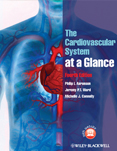- Home
- Cases
- Revision notes
- Your feedback
- Become a reviewer
- 'At a Glance' series
- More student books
- Student Apps
- Join an e-mail list


A 52-year-old overweight Caucasian male is referred to your clinic by his optician, who noted retinopathy, specifically ‘dot’ and ‘blot’ haemorrhages, on a routine eye examination. The patient complains of blurred vision, increased thirst and lethargy. You elicit the following history:
PC – blurred vision; polydipsia.
HPC – both eyes, for 2 months; becoming increasingly lethargic.
PMH – unremarkable.
DH – nil; no known drug allergies.
SH – 30 pack-years; 25 units EtOH per week.
FH – father had hypertension; mother died aged 72, stroke.
PC, presenting complaint; HPC, history of PC; PMH, previous medical history; DH, drug history; SH, smoking history; FH, family
history; EtOH, alcohol.
On examination he is comfortable at rest, there are no peripheral stigmata of cardiovascular disease, his radial pulse is 86, BP 150/95 mmHg, the JVP is not raised, nor is the apex beat displaced. On auscultation heart sounds S1 and S2 are normal. Dorsalis pedis and posterior tibialis pulses are palpable. Ophthalmoscopy reveals dot and blot haemorrhages on the retinae. The patient is 1.76 m tall and weighs 102 kg.
A lipid profile reveals HDL cholesterol to be 0.98 mmol/L (38 mg/dL) and triglyceride 1.80 mmol/L (164 mg/dL).
A random glucose tolerance test reveals a plasma glucose concentration of 14.0 mmol/L (255 mg/dL).
(a) What is your diagnosis and what do you do?
(b) What is the target blood pressure in non-diabetic and diabetic patients?
(c) Why do as many as 75% of people with DM2 have hypertension?
(d) Which antihypertensive drug do you prescribe as first-line therapy and why is this class of drug preferred?
(e) Which is the most important prognostic indicator of a cardiovascular event: systolic, diastolic or the pulse pressure?
(f) What additional risk of cardiovascular mortality is conferred by DM2?
(g) Why should this patient now receive a diuretic, in addition to the other antihypertensive agent? And from which class?
(h) Which adjunct therapy should be given?
(i) What action do you take now?
(j) Which glucose-lowering drug do you prescribe?